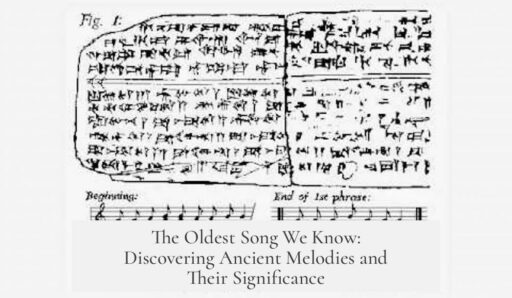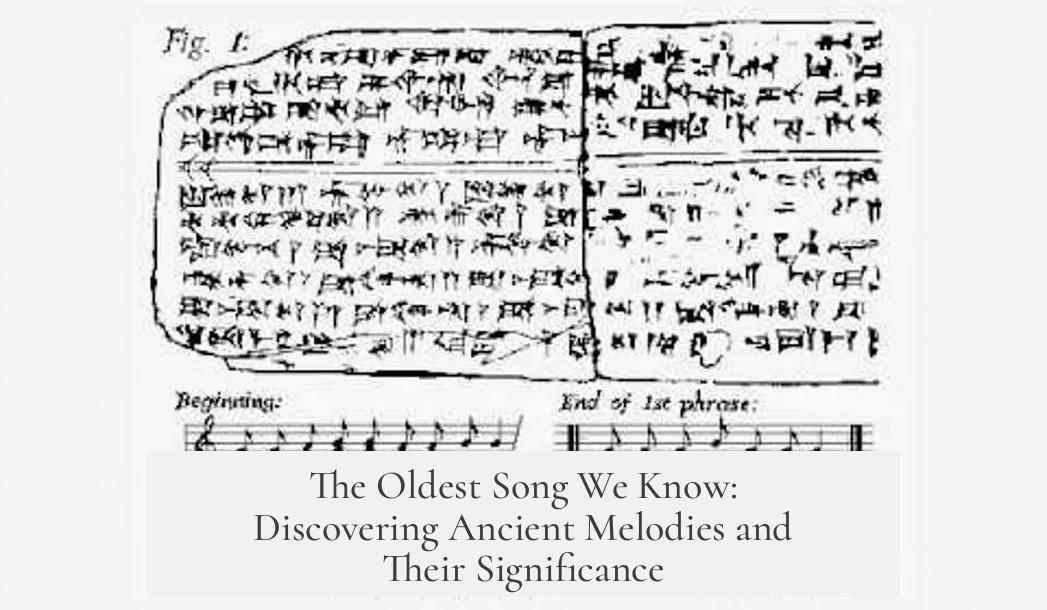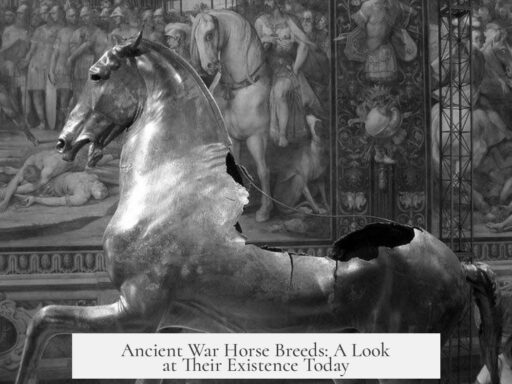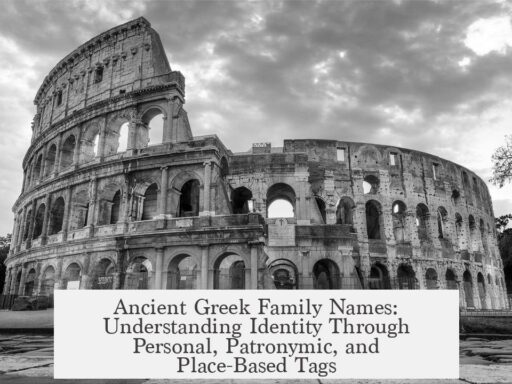The oldest song we know of is the Hurrian Hymn No. 6, dating back to around 1400 BC. It is the earliest known piece of recorded music with surviving musical notation. This song was found inscribed on a clay tablet in the ancient city of Ugarit, located in the Near East. The tablet includes cuneiform text and notation instructions, offering insight into how the music was to be performed.
The Hurrian Hymn No. 6 is part of a collection known as the Hurrian songs. These are written in the Hurrian language and reflect a complex musical tradition. Modern attempts to interpret the notation reveal that the piece is extended and intricate, not a simple melody. This complexity suggests an advanced musical culture existed at that time.
Despite its significance, the Hurrian Hymn likely does not represent the very oldest music ever created. Simpler compositions might have existed earlier but have not survived or been discovered. Oral traditions probably preserved much older musical forms, though such music was not formally recorded. Ethnomusicologists argue that early music was simple but shared characteristics found in music worldwide today, challenging the idea that the Hurrian Hymn is the ultimate oldest song.
Besides the Hurrian songs, another key ancient composition is the Epitaph of Seikilos. This piece is the oldest complete musical composition with clear notation and lyrics. It dates from ancient Greece and was found on a tombstone. The notation allows for accurate modern performance, distinct from the fragmentary and partially understood Hurrian pieces.
- Hurrian Hymn No. 6 (c. 1400 BC) is the oldest known recorded music with notation.
- It was found in Ugarit on a clay tablet in cuneiform script.
- The song is complex and extended, indicating sophisticated musical knowledge.
- Older, simpler music might have existed but lacks surviving records.
- The Epitaph of Seikilos is the oldest complete musical composition we can fully interpret.
What’s the Oldest Song We Know Of? Unraveling Ancient Melodies
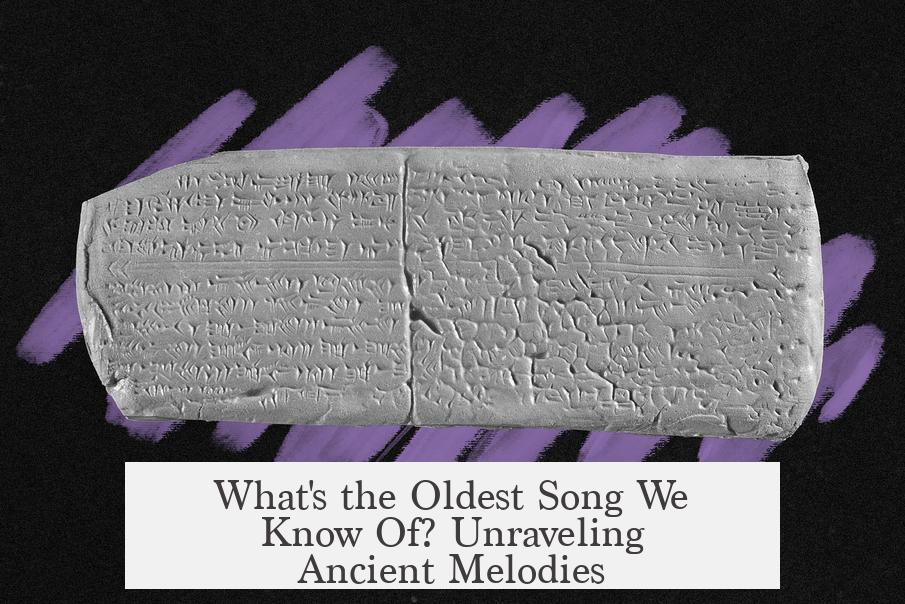
If you ever wondered what the *oldest song we know of* actually is, the answer takes us on a remarkable journey back to **1400 BC**. The oldest known recorded pieces of music come from the Hurrian songs, inscribed on clay tablets discovered in the ancient city of Ugarit, located in the Near East. This discovery is a captivating peek into humanity’s distant past when written music was just beginning to take shape.
Imagine scratching melodies onto clay tablets over 3,400 years ago! The Hurrian songs weren’t just doodles or random scribbles. They contain cuneiform notations—one of the earliest known forms of writing—capturing the text and musical instructions of a love song. This fascinating find was more than just a musical score; it was a cultural time capsule.
The Hurrian Songs: Ancient Love Letters in Music
The Hurrian songs stand out in history because they offer what might be the oldest extant musical notation ever found. Unlike oral traditions that rely on memory, these songs were literally set in stone—or clay, to be precise. Archaeologists unearthed these tablets from Ugarit, a powerful city-state in the ancient Near East.
It’s important to note that the song’s survival wasn’t simply an accident of archaeology; the clay tablets acted like old vinyl records, preserving the melody and lyrics for millennia. Researchers have painstakingly transcribed these symbols into modern notation and even tried to play the music. Early attempts reveal a piece that’s surprisingly complex and rather lengthy, hinting that ancient music could be sophisticated—not just simple hums or drumbeats as some might guess.
“The Hurrian song is a rather extended, complex song,” say researchers working on the tablets. This certainly challenges assumptions that the earliest music must have been simple.
Could There Be Older Music Hiding in Plain Sight?
But hold on—are the Hurrian songs truly the oldest music ever? The answer isn’t straightforward. Many experts believe older, simpler recorded compositions might exist somewhere, waiting for discovery.
Music history is tricky because before notation, music lived in oral traditions. These traditions pass songs from person to person, generation to generation. No physical record exists, but music may have been around for tens of thousands of years before the Hurrian tablets were made.
Ethnomusicologists argue that the earliest music had to be simple, featuring sounds and components still common today—like repetitive rhythms or basic melodies. The complexity of the Hurrian songs surprises many, but it also suggests even older forms might be simpler and not immediately recognizable as “music” by our standards.
So, while the Hurrian songs hold the record for oldest *known*, they almost certainly aren’t the oldest *actual* music. Oral traditions across the world, from tribal chants to ancient rituals, probably preserve unwritten melodies older than anything we’ve found in stone or clay.
The Epitaph of Seikilos: The Oldest Complete Song
If you’re looking for the oldest complete piece of music—lyrics and notation—you’ll want to switch gears to another ancient wonder: The Epitaph of Seikilos. This gem comes from ancient Greece, engraved on a tombstone around the first century AD. Unlike the incomplete Hurrian tablets, this composition is intact, offering a full melody and lyrics that can be played today without guesswork.
The Epitaph of Seikilos is poetic and elegant. Found on a burial monument, the song’s message urges us to enjoy life and not grieve over inevitable death. It reminds us that ancient music wasn’t just noise—it conveyed emotion, philosophy, and passed down wisdom. We can still listen to this song and feel connected to people who lived over 2,000 years ago. The musical notes and lyrics are clear, and modern transcriptions allow musicians to perform it authentically.
Why Does Knowing the Oldest Song Matter?
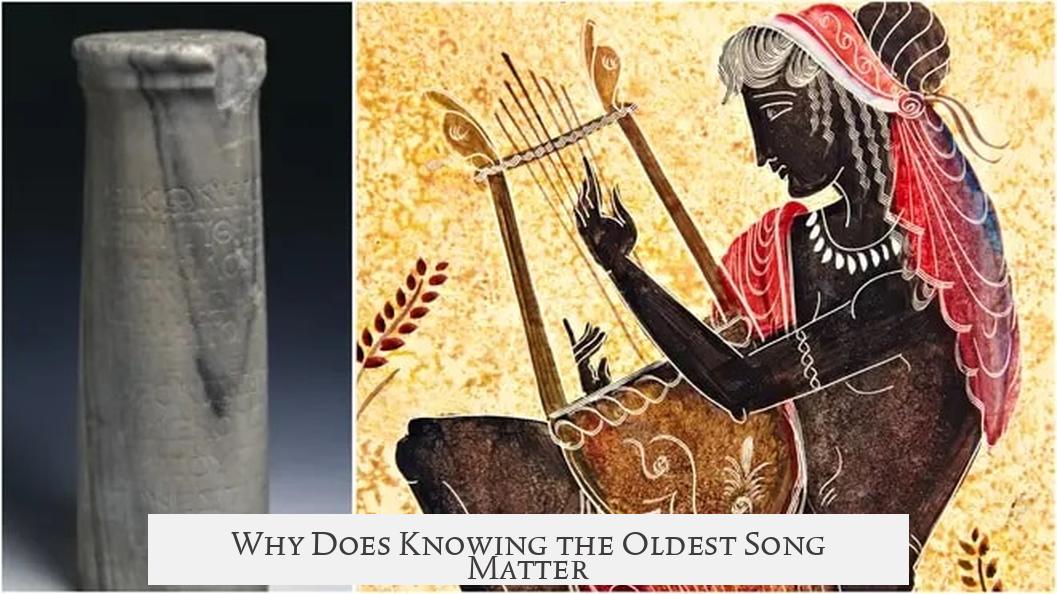
Understanding the oldest songs bridges past and present. It shows that music is one of the oldest human art forms, a language spanning cultures and millennia. The humble clay tablets of the Hurrians reveal that even ancient civilizations valued love, creativity, and expression in sound.
Today, music scholars, historians, and enthusiasts continue to study these early examples to grasp how music evolved. From the clay inscriptions of Ugarit to the tombstone melodies of Greece, these scraps of ancient culture inspire us to appreciate music’s power as a universal human experience.
Practical Tips for Music Enthusiasts and History Buffs
- Explore Reconstructions: Listen to modern recreations of the Hurrian songs and the Epitaph of Seikilos to hear what ancient melodies might have sounded like.
- Visit Museums: Museums with Near Eastern or Greek antiquities often display replicas or originals of such tablets and inscriptions—an eye-opening way to connect with history.
- Study Ethnomusicology: Dive into how oral traditions shape music history, learning why some sounds and styles persist across time.
- Stay Curious: More ancient music might still be buried in archaeological sites, waiting for discovery. Follow ongoing research to catch the latest breakthroughs.
Wrapping It Up: The Oldest Song We Know Of
The oldest recorded piece of music we know for sure comes from the Hurrian songs, carved on clay tablets dating back to 1400 BC. These ancient compositions reveal surprisingly complex music encoded in cuneiform writing. Yet, the oldest *complete* song with clear notation and lyrics is the Epitaph of Seikilos from ancient Greece.
But remember, music’s true origins stretch back far beyond these discoveries. Oral traditions and simpler melodies likely existed long before recorded notation. The history of music is a blend of archaeology, anthropology, and art, and each day brings new clues from our past.
Where will the next oldest song be found? Maybe in a forgotten scroll, buried tomb, or hidden cavern. Until then, we can marvel at these early clues and tap our toes to the world’s oldest tunes.
What is the oldest known recorded piece of music?
The oldest known recorded pieces of music are the Hurrian songs. They date back to about 1400 BC and were found inscribed on clay tablets in Ugarit, Near East.
What makes the Hurrian songs significant in music history?
These songs include the earliest known musical notation in cuneiform writing. This notation describes how to play the music and accompanies the lyrics of a love song.
Could there be older music than the Hurrian songs?
It’s possible. The Hurrian songs are complex, suggesting older, simpler music might exist but hasn’t been found. Oral traditions likely preserve older music styles, though not written forms.
What is the oldest complete musical composition we have?
The oldest complete composition is the Epitaph of Seikilos. It is an ancient Greek piece that includes both lyrics and clear musical notation preserved from a burial site.
Why do some experts doubt the Hurrian songs are the oldest music?
Some ethnomusicologists believe the oldest music was simple and shared features found worldwide today, suggesting the Hurrian songs may not represent the earliest music form.
